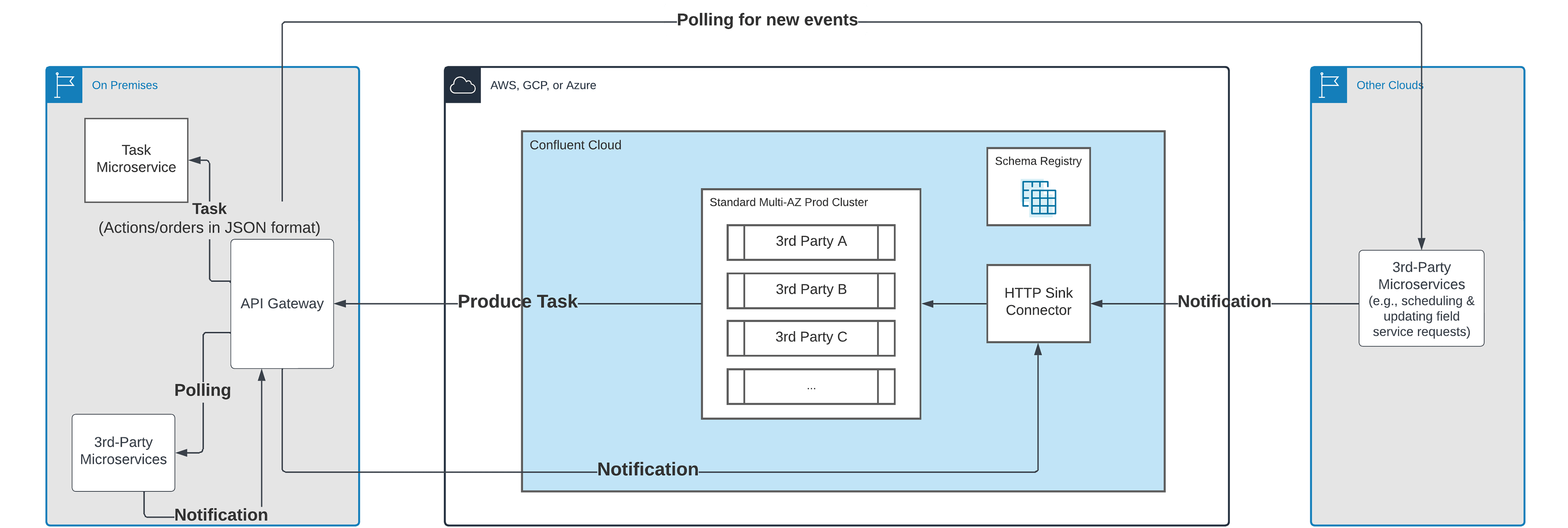Kafka in the Cloud: Why it’s 10x better with Confluent | Find out more
Real-Time Field Service Optimization
Leverage data streaming and event-driven microservices to streamline backend operations and facilitate real-time communication with third-party service providers, completing service jobs more efficiently for high customer satisfaction.
Eliminate Manual Workflows, Maximize Efficiency with Streaming
From scheduling and dispatching workers based on location and availability to providing status updates – telecom companies can bridge legacy systems and third parties with Confluent’s data streaming platform. Real-time event routing via microservices ensures that all downstream consumers are notified in real time and can act on new information as soon as it’s available. Confluent provides self-service access to consistent, reliable data so everyone can be on the same page regarding task status, enhancing productivity.
Confluent also provides the scalability and flexibility to easily add new third-party collaborators and microservices with zero disruption to existing workloads. This facilitates better collaboration between telcos and third-party service providers for greater efficiency, faster response times, and streamlined operations.
Enable incident-free operations with a fully managed data streaming platform and 99.99% uptime SLA.
Enhance operational efficiency by replacing manual, error-prone task assignment with event-driven microservices.
Scale cost-effectively and easily add new microservices and new 3rd-party service providers.
Increase revenue by reducing churn and attracting new customers with a higher NPS.
Build with Confluent
This use case leverages the following building blocks in Confluent Cloud.
Reference Architecture

Microservices produce tasks to topics in Confluent, where new events are processed in real time and readily consumed by downstream third-party microservices for scheduling, updating service status, etc.
Confluent’s pre-built, fully managed connectors such as the HTTP Sink Connector standardize communication and notify third-party companies in real time.
Data can be enriched in flight using stream processing tools such as Flink. Operations including filtering, projections, joins, aggregations, and materialized views provide context-rich data for downstream consumers.
Schema Registry ensures data quality and compatibility across producers and consumers. Stream Governance provides visibility into data lineage, data product discoverability for enhanced collaboration across teams and organizations, and supports more efficient microservice development.